I will readily admit that I have an obsession with plants that produce flowers shaped like buttons, puffs, or sweet little pom poms. They remind me of the quirky plants from Dr. Seuss books, much like the Truffula trees in The Lorax. So, naturally, when I came across Cotula, I was sold. Now I plant this charming ground cover in as many of my clients’ gardens as possible.
Native to South Africa, and also known as Brass Buttons or Big Yellow Moon, this evergreen ground cover will effortlessly and quickly spread, scramble, and trail like the best of them. Its soft, ferny gray-green foliage is attractive and touchable, but it’s the bright yellow button-shaped blooms that steal the show. The slightest breeze moves the flowers, balanced on thin stems, and shimmies them about.
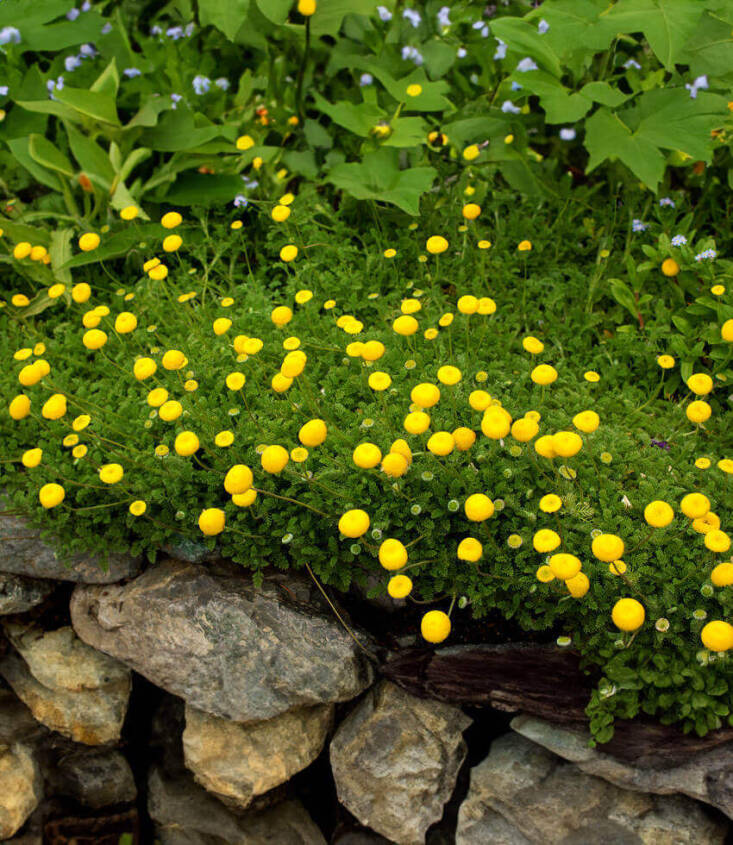
These sweet flowers start blooming in the spring and will continue blooming well into the fall with routine deadheading. And while pruning out each individual flower may seem tedious (or zen-like, depending on how you view it), you can also wait for most of the flowers to finish blooming and then can shear it all back to about three inches.
When the plant is done blooming, you can appreciate the ferny carpet that resembles a low-growing, grayer spikemoss. If you are looking for other ball-shaped plants to join the whimsical garden party, consider combining it with some of my other favorites, “Billy Buttons” and leucospermums. Or maybe repeat the round shape with other ball-like evergreens like Pittosporum ‘Golf Ball’ or Westringia ‘Grey Mound’. Pro tip: A repetition of an element (a color, texture, flower shape) throughout a garden lends a visual thread and creates cohesion.
Keep It Alive
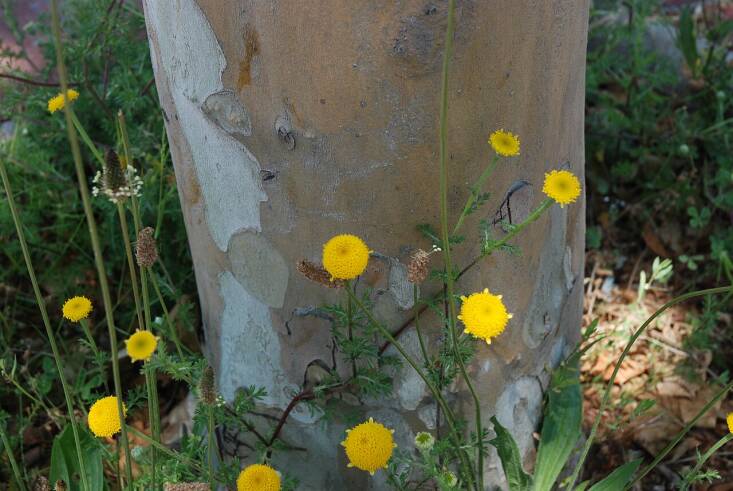
- Full sun to part shade is best. Too much shade and the plant will look lanky.
- Foliage grows to a low 1 to 2 inches tall but spreads to 36 inches wide.
- Average to well-draining soil is preferred.
- Medium water is best but becomes more drought-tolerant with age.
- While a robust frost might take it back, Cotula will most likely come back to life in the spring. Hardy to USDA Zone 8.
- Bonus: It is considered a fire-resistant plant.
Cheat Sheet
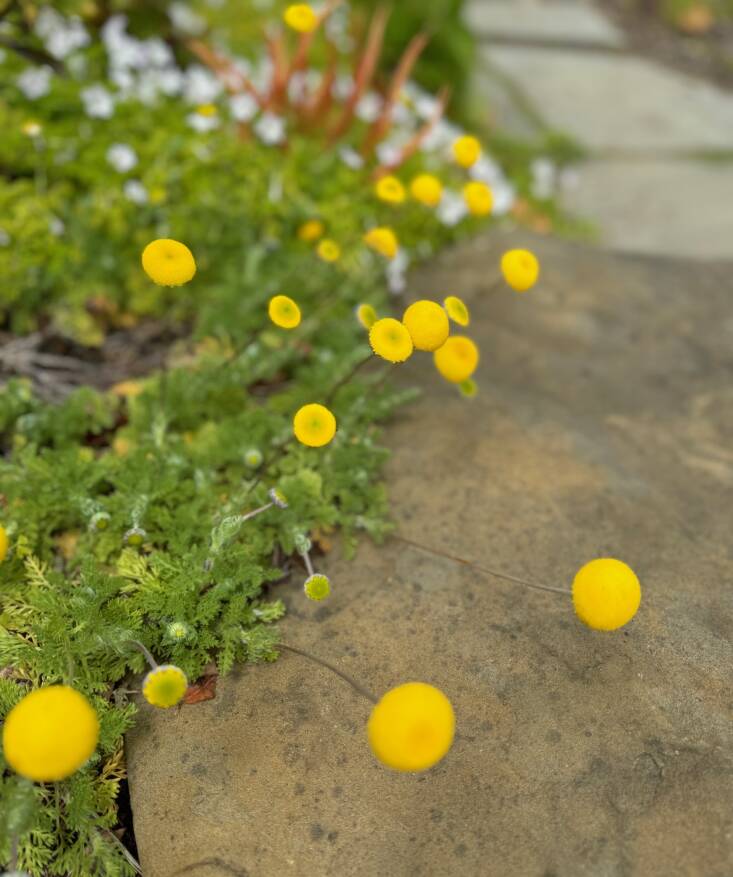
- Great for edging a wall, trailing over containers, or as a cute living mulch.
- Attracts bees and butterflies looking for lunch.
- Seaside-, wind-, and heat-tolerant.
- Makes the sweetest little cut flower for petite vases.
- Looks spectacular planted with other ball-shaped plants and with drought-tolerant beauties like purple salvias and orange yarrow.
See also:
- Gardening 101: Billy Buttons
- Gardening 101: Pincushion Flower
- 8 South African Flowers for American Gardens


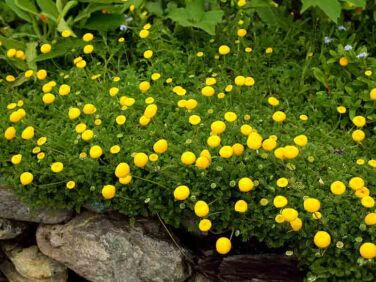


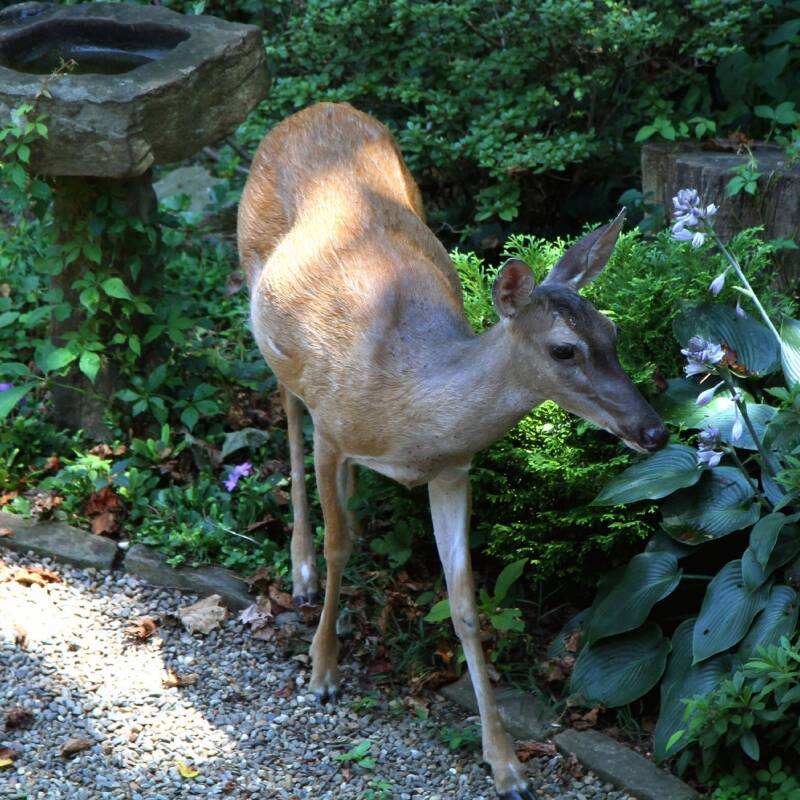



Have a Question or Comment About This Post?
Join the conversation